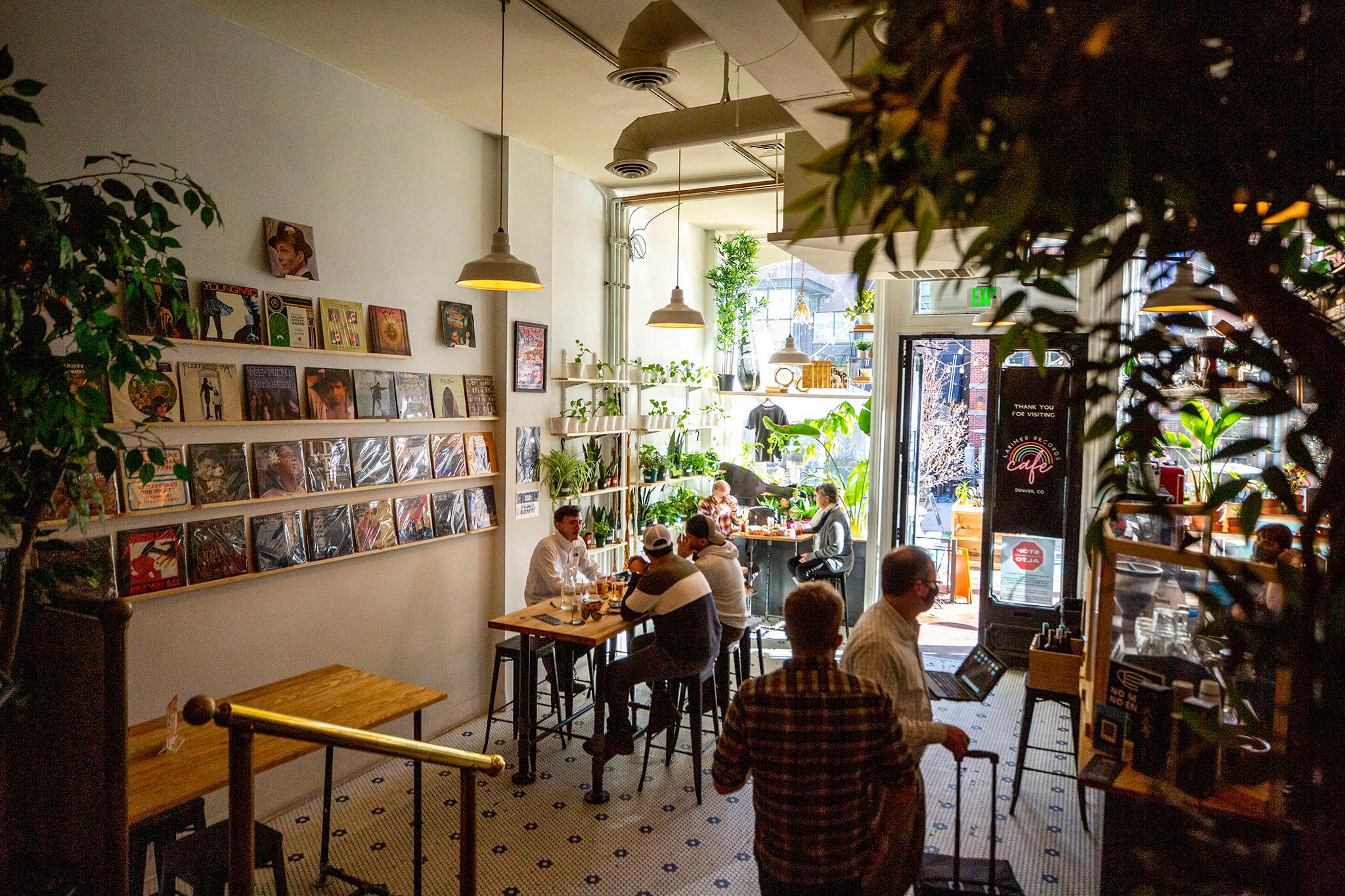Colorado's Department of Revenue just dropped the latest numbers on spending for counties across the state, and they bring good tidings for people who rely on bars and restaurants to pay the bills. It's still looking a little tough for workers and business owners in the city's entertainment and hotel industries.
First, a caveat: These stats lag a little bit from reality, and the most recent figures are from April. There's been plenty of spending since then, but this is what we have to work with.
Here's a snapshot of total retail spending in Denver:
All of these numbers come from the CDR's library of retail sales reports, which summarize earnings that get transformed into sales taxes.
Many of the industries included here are on seasonal cycles - retail, for example, usually peaks in December - so we've charted out spending back to Jan. 2018 so you can see how things ebb and flow over time. We've also included a single trendline to denote the average spending between March 2019 and Feb. 2020, essentially one full year before COVID sent things sideways.
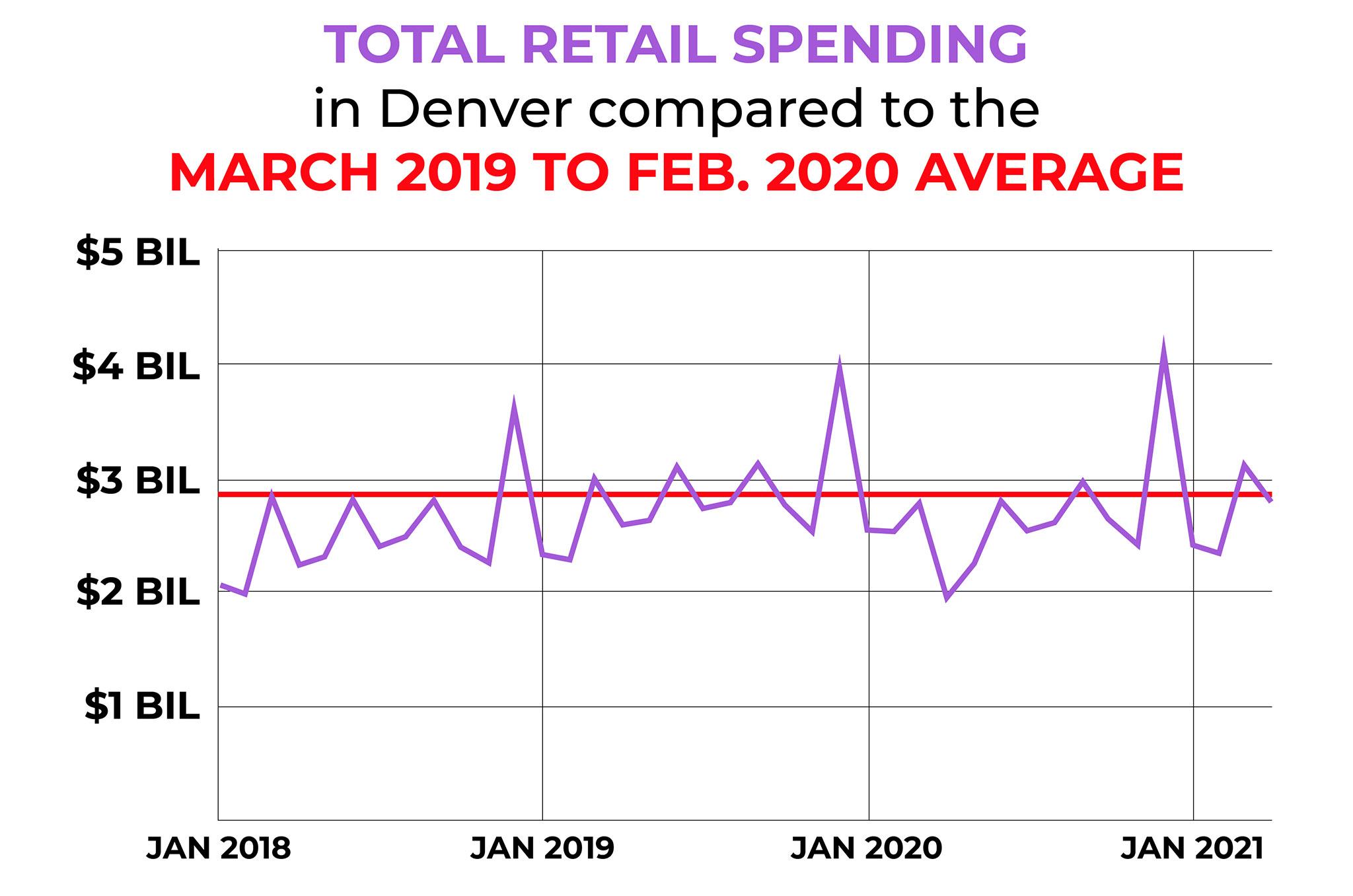
If we look at all of the city's industries together, you can see a big dip in April 2020 that brought overall spending to levels not seen since early in 2018. But there is a lot of cushion in these totals, since people switched from ordering drinks at bars to buying bottles at liquor stores, for example. The real stories here lie in individual industry totals.
Spending in Denver's restaurants and bars:
It's no secret that the food service industry took a nosedive during lockdowns, but the state's latest numbers show business is coming back.
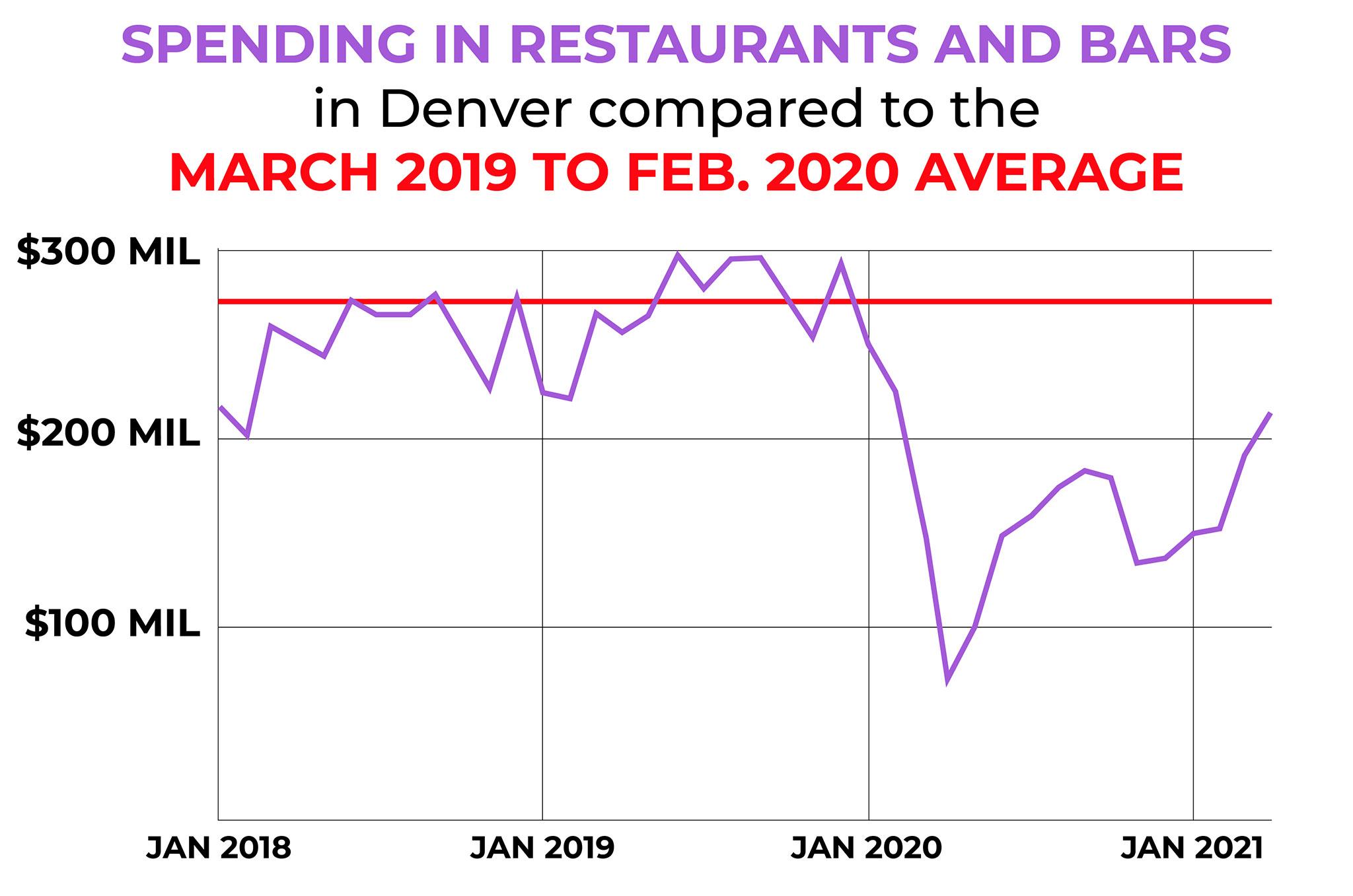
In April, restaurants and bars raked in about $215 million, a new high since the pandemic began. The industry as a whole was 20 percent shy of its pre-COVID average, and 190 percent higher than the lowest point in 2020. Sales here have been on the rise in a big way since vaccines started to roll out. If it's continued at this rate, businesses will be back to their old earnings very soon.
Spending on lodging:
This category encompasses everything from the Ritz to RV camps, and this industry was still a ways off from its former glory in April.
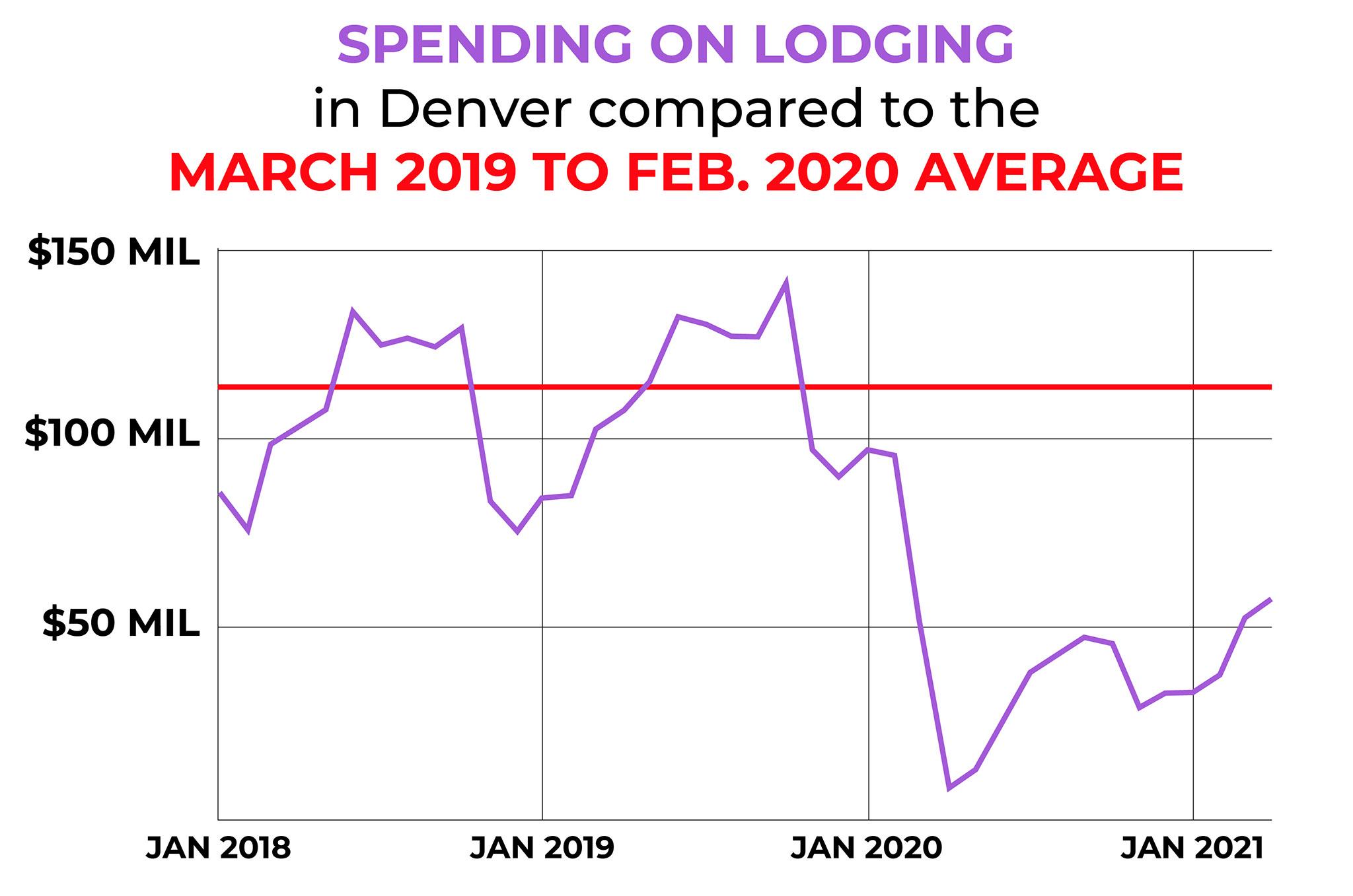
In total, lodgers earned about $58 million in April, 50 percent shy of the pre-pandemic average. Still, the industry has continuously trended up over the last six months as it heads into its typical busy season. And there are some more windfalls on the way, like the MLB All-Star Game that will draw people from all over the country in July.
Spending on arts, entertainment and recreation:
Our creative industries were also still dealing with some tough times in April. Unlike hotels, these businesses haven't seen steady growth in 2021.
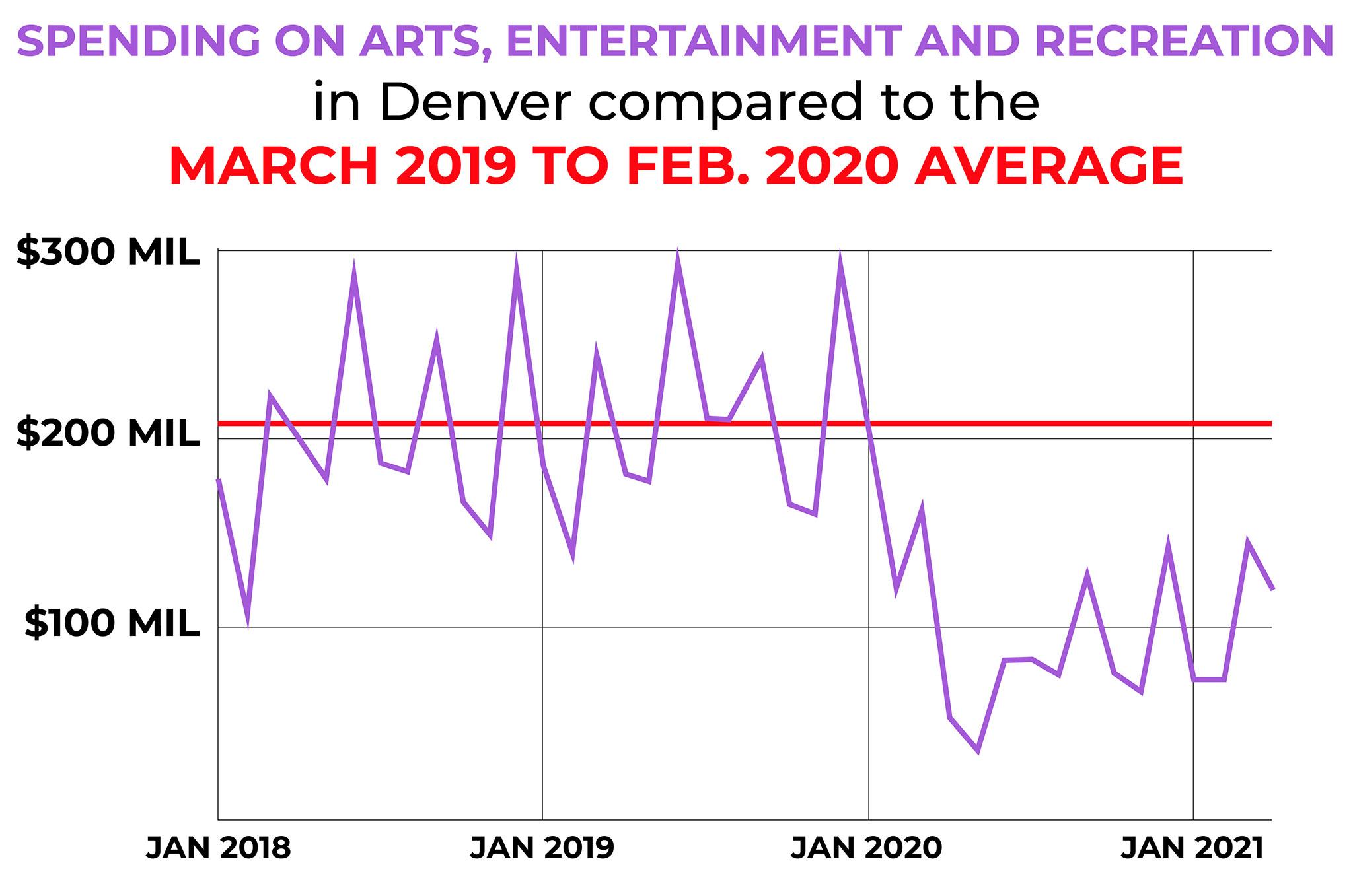
This block of businesses was still down 43 percent compared to the pre-COVID average. They hit their highest point since the pandemic began in March. Though sales dropped off in April, sporadic low points are growing further from their pandemic slump.
Spending in general merchandise stores:
It looks like Denverites are still shopping at places like Target and Sam's Club in ways they never have before. Sales here have been ticking up for years, but last December marked the highest total on record - about $130 million.
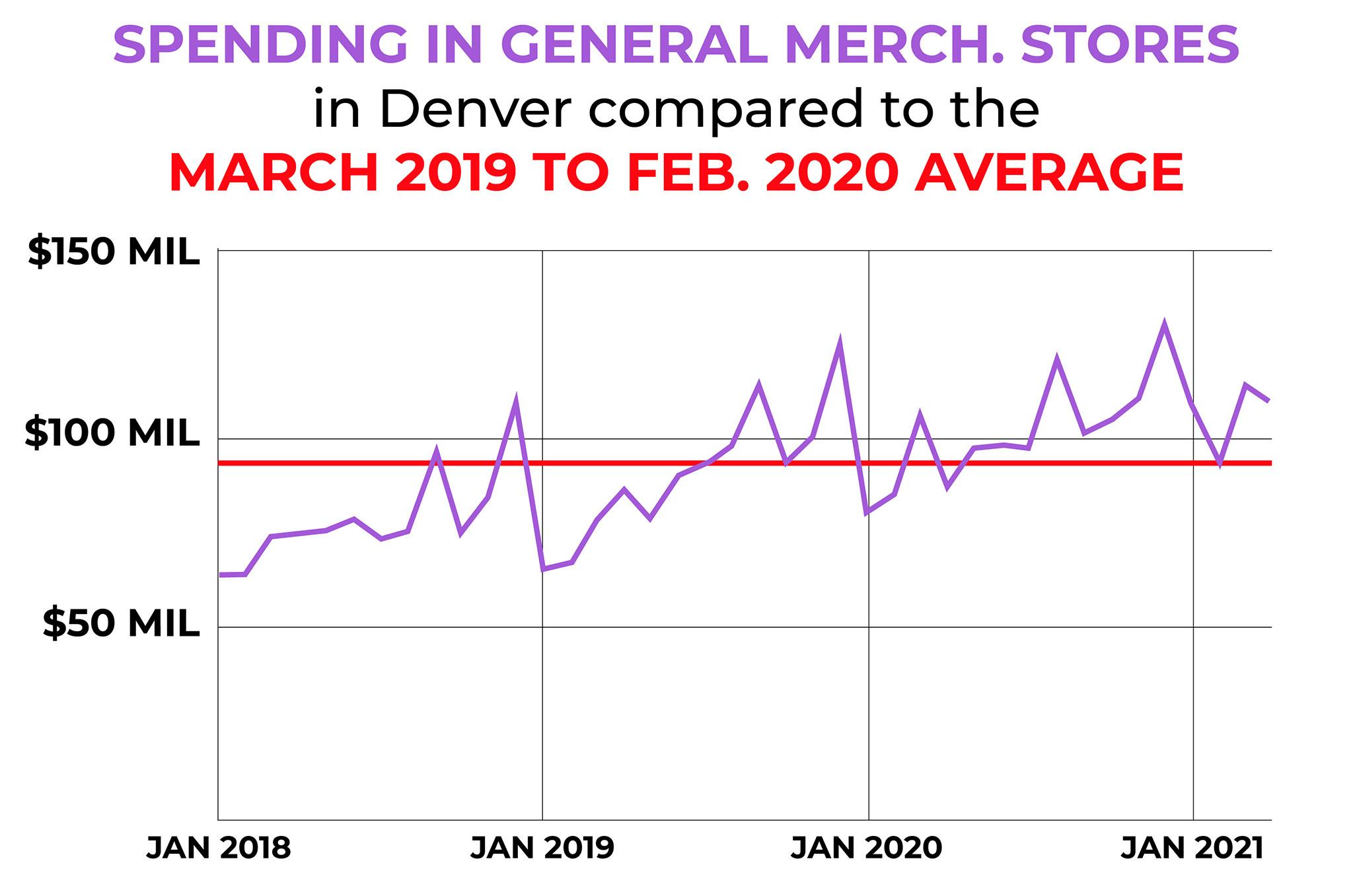
This industry hasn't reported sales lower than its pre-COVID average since April 2020.
Spending in clothing stores:
Though people were apparently down to brave big box stores during the pandemic, numbers from clothing stores show this industry really needed to hang on until the city began to re-open. Their April numbers were still below their pre-COVID average, though just by seven percent.
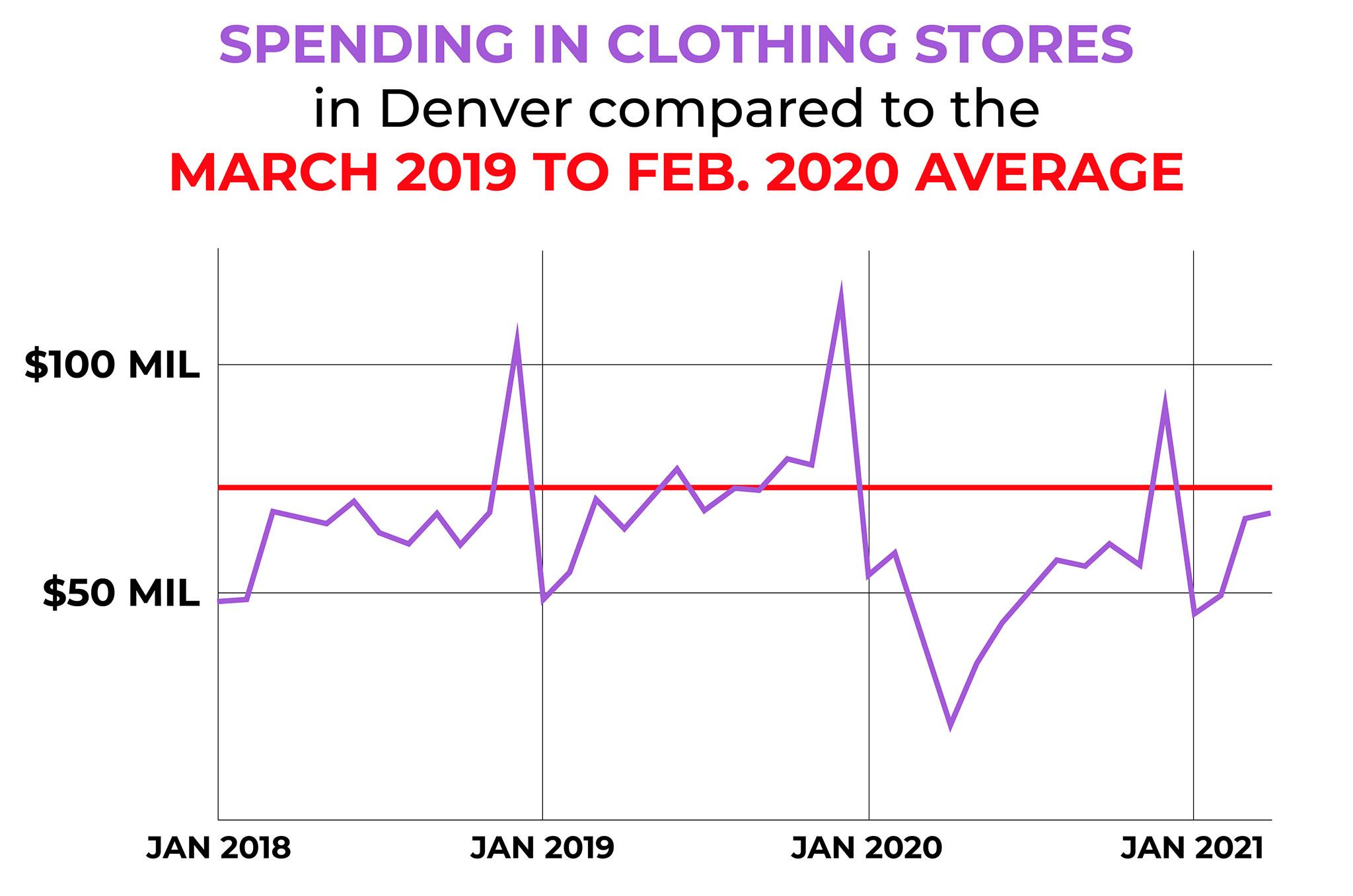
For one thing, many stores like Target and Sam's Club were allowed to stay open as "essential businesses" during the pandemic's darkest months. On the other, a lot of small business owners who work retail told us they rely on crowds flocking to restaurants and bars to make ends meet.
We're always looking for ways to put human faces to these numbers. Tell us how things have been going for you, and we may follow up to write about it!

